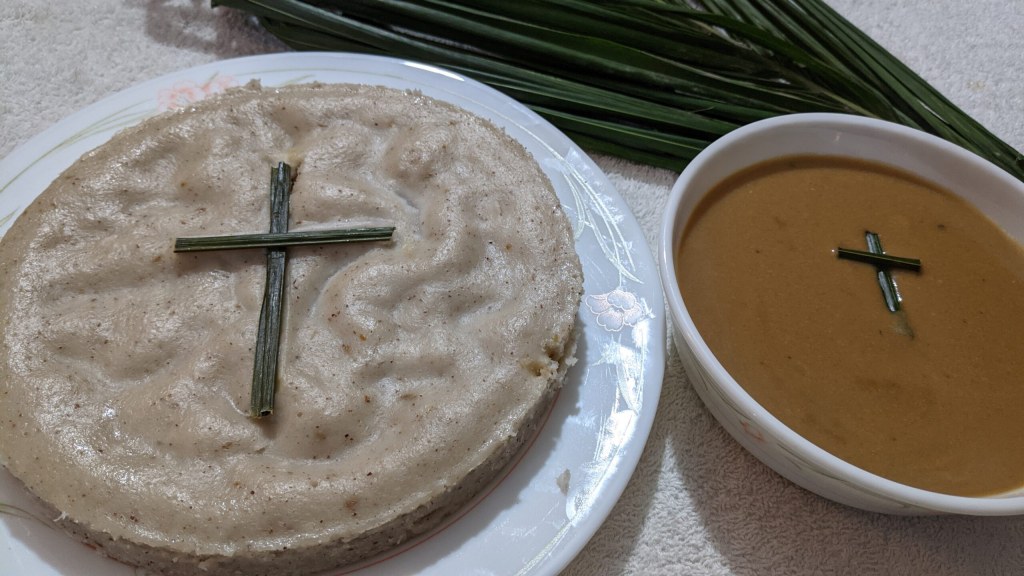Discover The Best Recipe For Pesaha Appam – Unleash The Flavors And Tradition!
Recipe for Pesaha Appam: A Traditional Delight
Introduction
Dear Cooking Enthusiast,
2 Picture Gallery: Discover The Best Recipe For Pesaha Appam – Unleash The Flavors And Tradition!


Welcome to our article on the recipe for Pesaha Appam, a traditional delicacy that has been passed down through generations. In this article, we will explore the history, ingredients, instructions, serving suggestions, and tips to help you create this mouthwatering dish in your own kitchen. So, put on your apron and get ready to embark on a culinary journey!

Image Source: lifestyletodaynews.com
Let’s dive into the world of Pesaha Appam and uncover its secrets.
What is Pesaha Appam?
Pesaha Appam, also known as the Passover bread, is a traditional dish prepared by the Malabar Nasrani community of Kerala, India. It is a significant part of the Passover feast, which commemorates the Last Supper of Jesus Christ. This unleavened bread holds deep religious and cultural significance and is enjoyed by people of all backgrounds.
Who celebrates Pesaha Appam?

Image Source: ytimg.com
The Pesaha Appam is primarily celebrated by the Malabar Nasrani community, also known as the Saint Thomas Christians, in Kerala, India. However, its popularity has spread, and now people from different communities also enjoy this flavorful bread.
When is Pesaha Appam prepared?
Pesaha Appam is traditionally prepared on Maundy Thursday, which marks the beginning of the Easter Triduum. This day is significant as it commemorates the Last Supper of Jesus Christ. Families gather together to prepare and share this special bread as part of their Passover feast.
Where did Pesaha Appam originate?
Pesaha Appam originated in the Malabar region of Kerala, India. The Malabar Nasrani community, descendants of the early Christian converts, have been preparing this dish for centuries. Over time, it has become an integral part of their cultural and culinary heritage.
Why is Pesaha Appam significant?
Pesaha Appam holds great religious and cultural significance for the Malabar Nasrani community. It symbolizes the unleavened bread shared by Jesus Christ during the Last Supper. The preparation and sharing of Pesaha Appam bring families together, fostering a sense of unity, tradition, and faith.
Ingredients
To prepare Pesaha Appam, you will need the following ingredients:
1 cup rice flour
2 tablespoons grated coconut
1/2 teaspoon cumin seeds
1/2 teaspoon black sesame seeds
1/4 teaspoon salt
1/2 cup jaggery (or brown sugar)
1 cup water
1 banana leaf (for steaming)
Let’s take a closer look at these ingredients and their role in creating the perfect Pesaha Appam.
Instructions
Follow these step-by-step instructions to prepare Pesaha Appam:
In a mixing bowl, combine rice flour, grated coconut, cumin seeds, black sesame seeds, and salt. Mix well.
In a separate saucepan, heat jaggery (or brown sugar) with water until it dissolves completely. Let it cool.
Add the jaggery mixture to the dry ingredients and mix well to form a smooth batter. Set it aside for 30 minutes to rest.
Meanwhile, prepare the steamer by heating water in a large pot. Place a banana leaf on the steaming plate.
Pour the batter onto the banana leaf and spread it evenly.
Steam the appam for about 20-25 minutes or until it is cooked through.
Remove the appam from the steamer and let it cool slightly before serving.
Now that you know the instructions, it’s time to get cooking!
Serving Suggestions
Pesaha Appam is traditionally served with Pesaha Pal, a creamy coconut milk dip. To enhance the flavors, you can also pair it with a spicy curry or a tangy chutney. The combination of the soft and fluffy appam with the rich and flavorful accompaniments is sure to tantalize your taste buds.
Techniques and Tips
Here are some techniques and tips to ensure that your Pesaha Appam turns out perfect:
Use good quality rice flour to achieve the right texture.
Grate the coconut fresh for enhanced flavor.
The resting time allows the flavors to meld together and results in a softer appam.
Make sure the steamer is properly heated before placing the appam for cooking.
Handle the banana leaf carefully to prevent any tears.
By following these techniques and tips, you can master the art of making Pesaha Appam.
Frequently Asked Questions
Q: Can I use other types of flour instead of rice flour?
A: Rice flour is traditionally used for Pesaha Appam, but you can experiment with other flours for variations in taste and texture.
Q: How long does Pesaha Appam stay fresh?
A: Pesaha Appam is best enjoyed fresh. However, if stored in an airtight container, it can stay fresh for up to 2 days.
Q: Can I freeze Pesaha Appam?
A: Yes, you can freeze Pesaha Appam. Place the cooled appam in a freezer-safe bag and store it for up to a month. To enjoy, thaw and steam it until warm.
Q: Can I make Pesaha Appam without using a steamer?
A: While a steamer is recommended for the traditional cooking method, you can also use an idli maker or a heatproof plate placed in a large pot with water for steaming.
Q: Can I add flavors like cardamom or nutmeg to the appam batter?
A: Yes, you can add spices like cardamom or nutmeg to the batter to enhance the flavor. However, be mindful of the quantity as they can overpower the delicate taste of the appam.
Conclusion
Now that you have learned the recipe for Pesaha Appam, it’s time to gather the ingredients and embark on your culinary adventure. This traditional dish not only delights the taste buds but also carries a rich cultural and religious significance.
Remember to follow the instructions, use fresh ingredients, and add your personal touch to create a Pesaha Appam that will impress your family and friends. Enjoy this delightful delicacy and cherish the traditions that it represents.
Final Remarks
Disclaimer: The information provided in this article is for educational purposes only. It is always advisable to consult a professional chef or nutritionist for specific dietary considerations and allergies.
Thank you for joining us on this journey to explore the recipe for Pesaha Appam. We hope that this article has inspired you to try this delicious dish and share it with your loved ones. Happy cooking!
This post topic: Recipe


